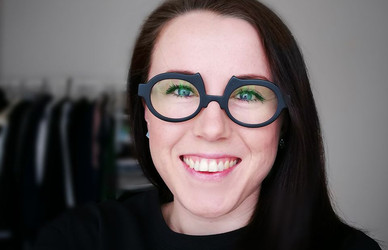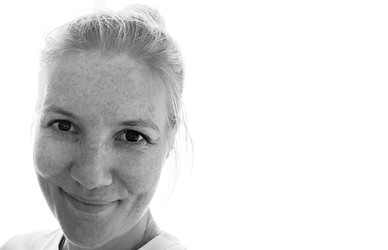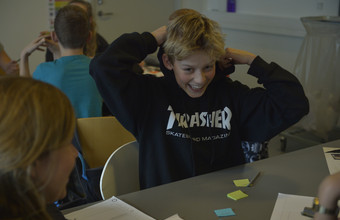Urban spaces that speak to people
Architect and PhD student Anne Corlin’s wants to use design to create better living spaces.
“First I had to understand the social agendas. What kind of life is lived in the Skovparken housing estate? And if that part of Kolding is going to be linked with the rest of the town, what are the barriers that need to be broken down?”
Anne Corlin is an architect and half-way through a three-year research project exploring “…what significant design parameters can be used to underpin social life in the urban space,” a PhD project financed by Kolding Municipality, Landsbyggefonden (an independent foundation that supports public housing) and AAB Kolding (a public housing organisation), but physically located at Design School Kolding. Anne Corlin’s project specifically examines two urban spaces: Superkilen, a public park in the Nørrebro district of Copenhagen, and the Skovparken housing estate in Kolding.
"These are two vastly different areas. The Copenhagen district is one of the most densely populated areas in Denmark. There is an entirely different critical mass, and the whole urban renewal process has been a very dramatic, physical intervention in the district, which has been 17-18 years in the making. I therefore used that project to build up knowledge, and to form some notions of 'before and after', "says Anne Corlin.
Emotions rather than aesthetics
The Kolding district is still in the 'before' phase, and with a theoretical starting point that says that physical and social parameters constantly interact with each other Anne Corlin had to understand Skovparken both materially and immaterially:
"I conducted 12 interviews with 14 different residents – the youngest ones, who were only 13 years old, were interviewed in pairs. I made them draw and explain on a map how they use the town: Where they ride their bikes, go by car, what they do in their leisure time. I brought some pictures of different types of homes in order to have a chat about home and lifestyle. Finally, I had photos of different types of urban spaces, from St. Peter's Square in Rome, via a flea market to a shopping centre. They had to choose four that appealed most to them, and it gave me an insight into what was important for each individual, "explains Anne Corlin.
After the first round of interviews, everyone was asked to photograph the places in the town they liked or disliked. When that stack of photos was presented, I gained a whole new perception:
"The places they liked were predominantly places with good memories. It was not necessarily because they were beautiful. Compared to my assumption that there is a relationship between social and physical elements, it was very interesting to see that the residents' choice of motif was driven by emotions rather than aesthetics."
Zooming in on the centre
Knowledge from the initial data collection will now be transferred to a physical project. Therefore Anne Corlin has chosen to zoom in on the shopping centre, located in the middle of Skovparken, a location which on paper is attractive – also when it comes to attracting people from outside the district. But the centre has a clear signal problem, Anne Corlin remarks:
"The neighbourhood's residents like the centre's function and are pleased to have the shops in their neighbourhood, but some are uneasy going there. The centre is in poor condition, plus there is a bar that attracts many drunken people. Also the location of a job centre inside the shopping centre is a good, rational idea, which unfortunately also has an adverse effect because the whole centre in a sense becomes a tangible example of the social challenges of the place. I will therefore now, based on the American sociologist Richard Sennet’s work with 'the porous city', focus on how it is possible, through design, to give a push to the centre's overall identity, so that people will change their perception of the place."
Site writing
Exactly how to approach that segment is still in the exploratory phase. Many things are on the drawing board, but the challenge is to find the balance between how much the local residents themselves want and how much they can manage to engage and participate in the changes. Therefore the PhD researcher will participate in a course in January 2017 at the Bartlett UCL in London, where the English Professor, Jane Rendell, is scheduled to teach Site Writing. "It's a method to use writing to position oneself in relation to a place," explains Anne Corlin.
"I only have a relatively short time to create a change that can influence the identity of the place. I am still uncertain whether it is at all possible. I am therefore also in dialogue with some researchers in Aarhus who are dealing with the same issues. And through the writing course I also hope to become even better at analysing the place and thus get even closer to the initiatives that can really create social change in Skovparken.”
In 2017, Design School Kolding and the international Cumulus Association will be hosting a large, international conference with the title REDO. The purpose of the conference is to zoom in on design’s role in creating a sustainable future and achieve impact on political decision-making processes. As a prelude to the conference, we will be bringing a series of articles to show Design School Kolding’s research and how we work to bridge the gap between design thinking and design practice.




